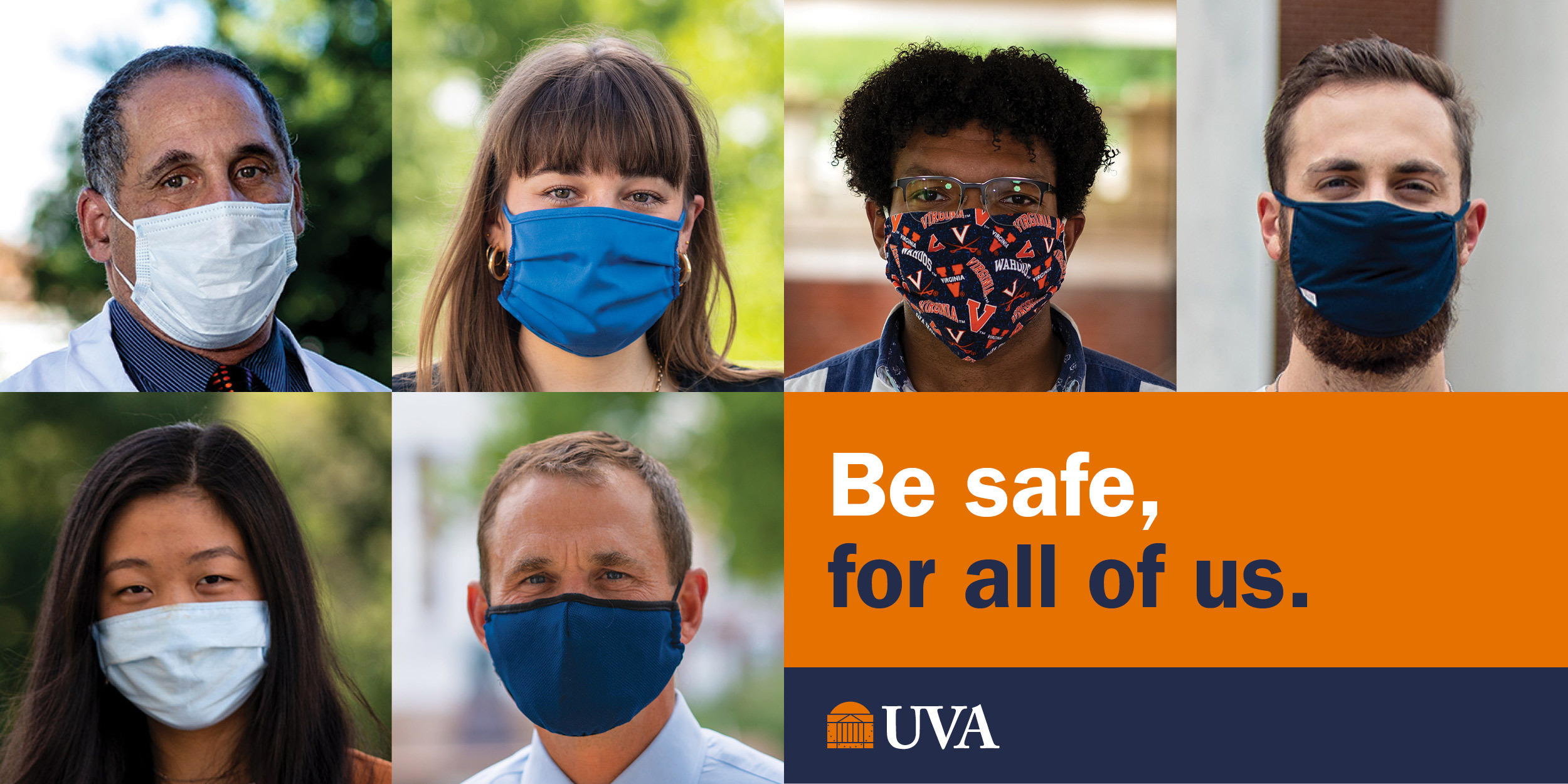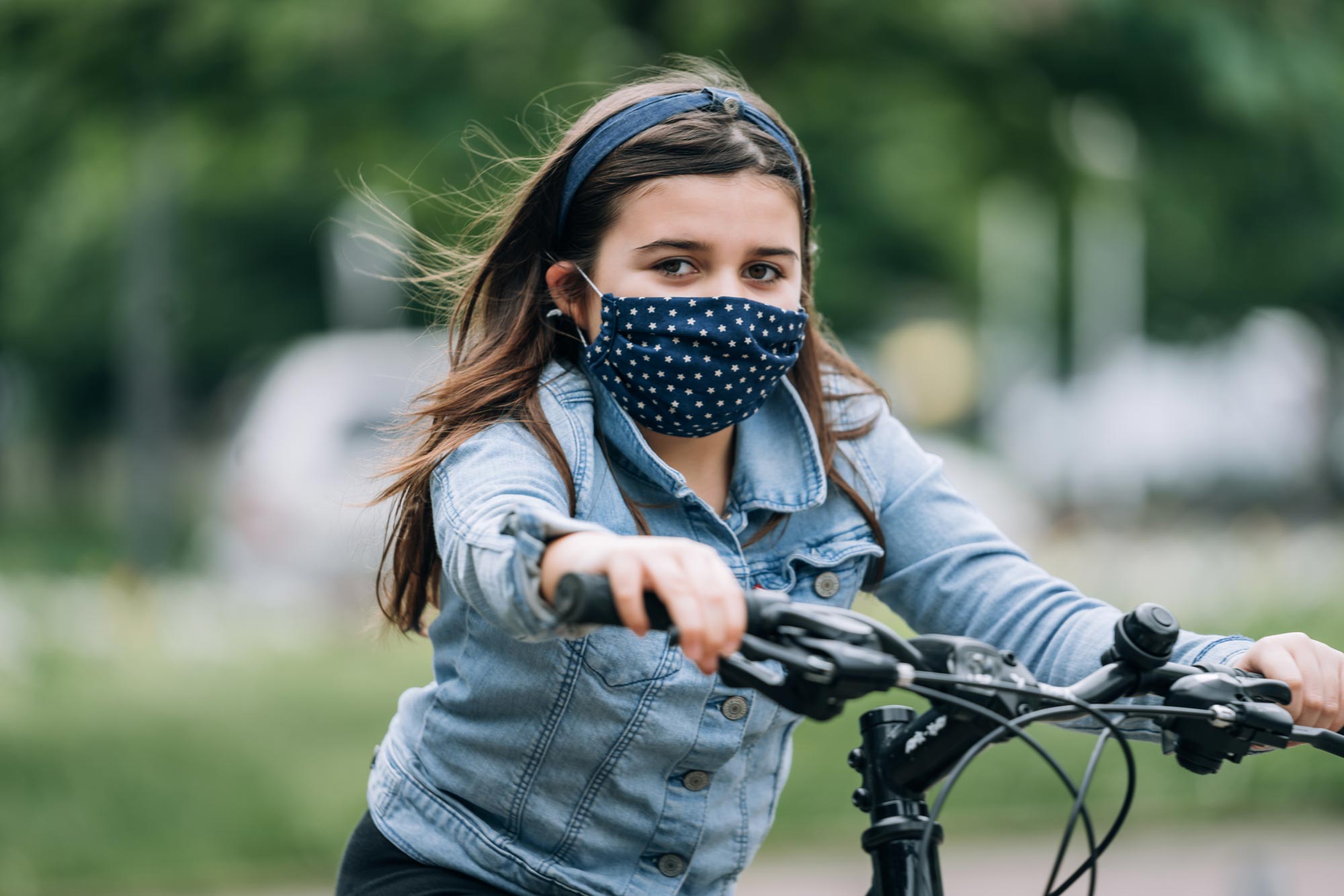When you consider that approximately one-third of children suffer from an anxiety disorder, it may not come as a surprise that COVID-19 has introduced even more things to be anxious about.
In addition to concerns about contracting the disease, a new worry has emerged. Some children are struggling mightily when it comes to one of the basic guidelines to preventing the spread of the novel coronavirus: wearing a face mask.
UVA Children’s psychologist Alisa Bahl says many of her patients are struggling with the idea of wearing a face mask, sometimes for extended periods of time.
UVA Today reached out to Bahl to learn more about what is causing this and what parents and guardians can to to help ease the stress of wearing face masks.
Q. Can you explain what is worrying children?
A. Children are experiencing a variety of anxieties which are related to COVID, as well as mask-wearing. One, of course, is fear about the virus itself and whether or not they or their loved ones will get sick from it. And then the second is regarding wearing a mask.

Alisa Bahl, a child psychologist at UVA Children’s, said when it comes to masks and children, practicing at home can make it easier later. (Contributed photo)
Some children might be afraid when they see others wearing a mask, whereas other children might be fearful about wearing the mask themselves. For example, they might feel like it’s uncomfortable or they’re not able to breathe, or perhaps they don’t like the way it feels pulling on their ears.
Q. What scenarios are we talking about here? Returning to schools? Athletics? Just going out in public in general?
A. I think you’re hitting on all of the big areas. As schools are transitioning back to perhaps in-person learning at some point, more children are getting together with other children outside or involved in sports. A lot of questions come up regarding mask-wearing and making sure that children are safe and able to return to these activities.
Q. What age range are we talking about?
A. Well, you know, it really covers the whole span. For preschoolers, it might be that they are uncertain. This is unfamiliar or difficult to read the social cues of others. And this continues on through even adolescents, who have other things that they worry about, which could be related to how it feels against their face, if it feels uncomfortable, if they are comfortable around others. It could be a whole range. It also can include concerns about breathing or will they be really hot when they’re participating in sports, or are they safe when they wear a mask if they’re breathing hard?
Q. How can parents help their children get over their fears?
So, I really think that we have to break this down into a few different areas. First of all, it’s important to make sure that a child has a mask that they are comfortable wearing. And so this can involve a few different things. First of all, parents can make sure that the child likes his or her own mask. They might be more likely to wear a mask if they’ve been able to choose the material or decorate it themselves, if that’s a possibility. They might prefer a mask that has a favorite character or something that really interests them, perhaps even their favorite sports team. So that’s one thing is to make sure it’s a mask they like.

The second thing is to make sure that the mask is comfortable for the child. Many of the masks have ear loops, but there are also other designs that include head straps that are elastic, kind of like wearing a pair of swim goggles. Some masks come with mask extenders that can reduce the pressure on children’s ears and also sometimes having a nose piece to hold the mask away from the face a little bit so that children might feel more comfortable during exercise.
Q. Practice makes perfect. Does it make sense to practice wearing a face mask?
A. Yes. Another area is to really think about how to set up a child for success before they actually need to wear the mask.
And so, just as with any new behavior, we want to practice in a time when we don’t feel anxious and we don’t feel pressure. The same thing holds true for being able to wear a mask when children do return to school or return to activities with peers.
In order to do this, it’s helpful to provide an explanation for wearing the mask in language that is developmentally appropriate for that child. An explanation should be positive and supportive rather than using fear as a strategy to motivate the child.
So, for example, a parent might say, “We’re wearing a mask to keep ourselves and other people safe.” Or they could say something like, “We are wearing a mask to prevent the virus from going from one person to another,” so that it just helps them to understand the importance or why they’re doing it. It provides a rationale for wearing the mask.
Q. Are there expectations parents should lay out to their children?
A. Yes. Parents should really just make sure to provide clear rules and expectations for what appropriate mask-wearing would look like. So, it might be something like, “Make sure you keep your mask on over your nose and try not to touch your mouth with your hands.”
Related to setting up children for success is the idea of letting children warm up to the idea of wearing a mask. This can involve modeling for children. So, if adults or caregivers or loved ones are wearing masks, they go outside, they wear a mask and they just start wearing it around the house at normal times, it starts to normalize wearing a mask in a non-threatening environment.
And the other thing parents can do is to allow children to play with masks, like with dolls or favorite stuffed animals, so that they have the opportunity to model good mask-wearing with those favorite toys.
Q. Wearing a mask for an extended period of time can be really uncomfortable. Where does being honest about this fit in with helping a child get over their anxiety?
A. It’s OK to say, “Oh, I hate wearing that mask all day,” or, “This mask is really uncomfortable.” But it’s important for parents to then to model the appropriate coping skills by maybe saying, “This mask is really uncomfortable, but I know that I need to wear it and I’m so glad that I was able to go out with my friends.”
This acknowledges their feelings, that it’s not the most comfortable thing or it’s difficult to read the social cues of other classmates and of friends. Allowing children to express those feelings is helpful.
Media Contact
Article Information
October 6, 2020
/content/qa-heres-how-ease-childrens-anxiety-about-wearing-face-masks

